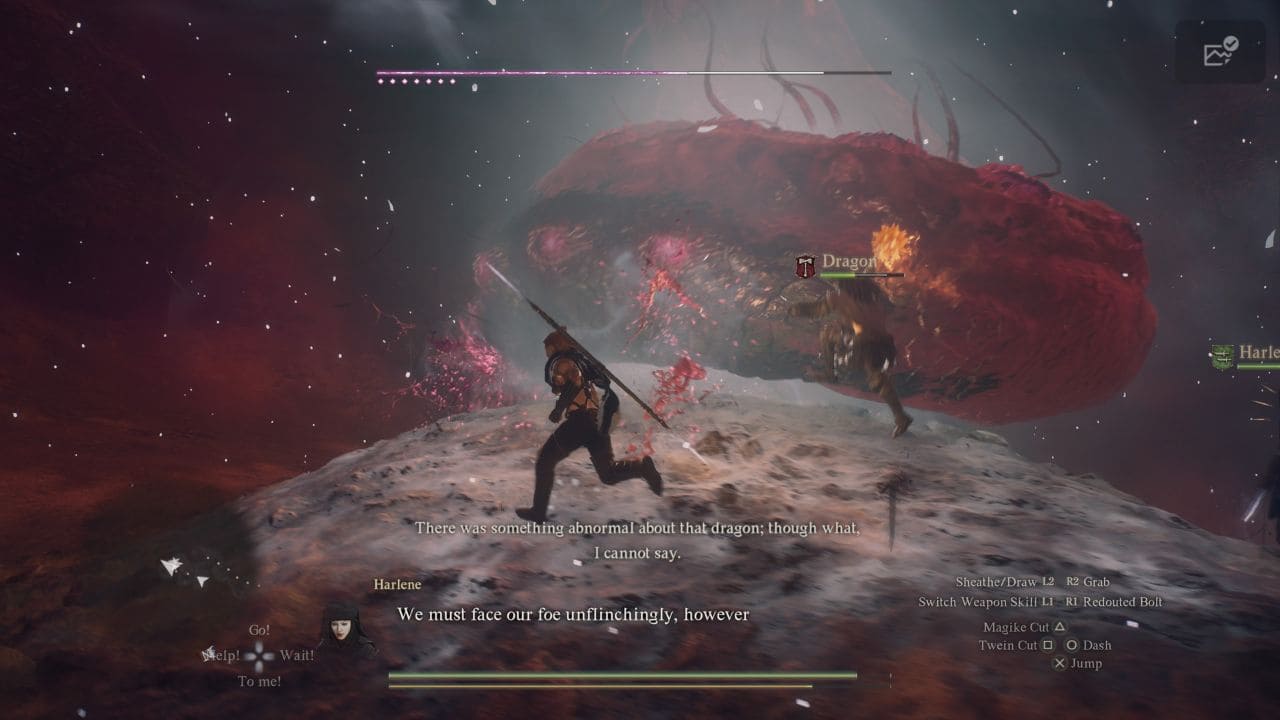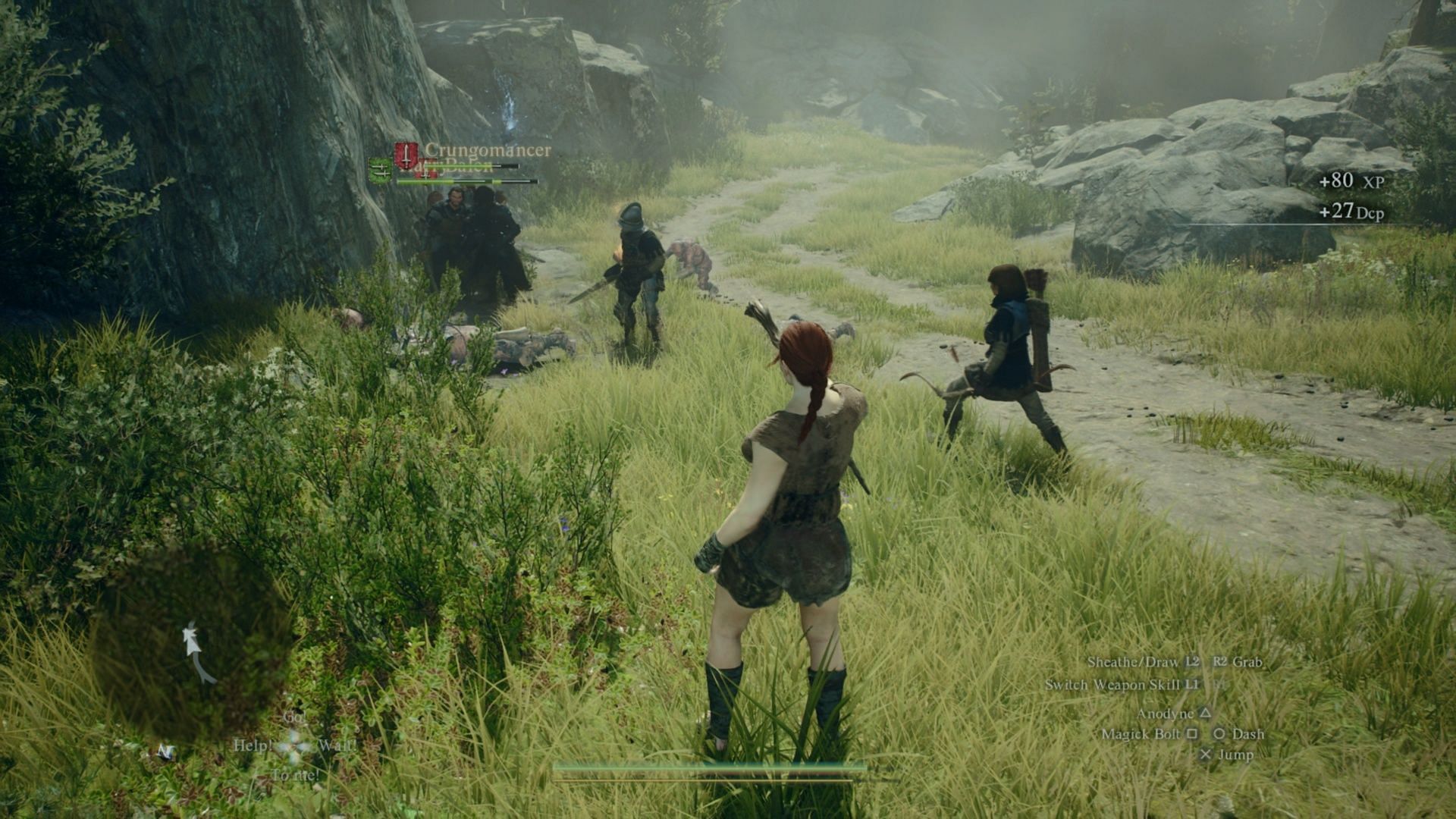Dragon's Dogma 2: Does It Have Difficulty Settings? - Unveiled
In the realm of video games, does the absence of adjustable difficulty settings truly diminish the overall experience? In Dragon's Dogma 2, the decision to forgo traditional difficulty options raises a crucial question about player agency and the very essence of challenge.
Dragon's Dogma 2, a title that promises to immerse players in a vast and perilous world, makes a bold choice in its design: the absence of selectable difficulty levels. Unlike its predecessor, Dragon's Dogma: Dark Arisen, which offered the familiar trio of Easy, Normal, and Hard modes, the sequel opts for a different approach. The game throws players into the thick of the action without the ability to pre-define the intensity of their journey. This decision immediately sets Dragon's Dogma 2 apart from many modern action RPGs, prompting a closer examination of its impact on gameplay.
The absence of difficulty settings raises a question: how does Dragon's Dogma 2 manage to provide a challenging and engaging experience? The answer, according to available information, lies in its dynamic difficulty system. While the specifics of this system are still somewhat vague, the expectation is that the game will adapt to the player's actions, equipment, and the composition of their party (including the pawns, AI-controlled companions).
- Six Flags Magic Mountain Park Hours Updates You Need To Know
- Quizlet Study Light Heat Chemical Changes
| Feature | Details |
| Dynamic Difficulty | The game adapts to player performance, equipment, and party composition. |
| Enemy Behavior | Enemy aggression and tactics change based on the evolving difficulty. |
| Stagger Mechanics | The likelihood of enemies being staggered by attacks might be affected. |
| Loot | The amount of items received during pickups |
| Healing Time | Longer healing time depending on the difficulty level. |
The concept of dynamic difficulty isn't entirely new, and a comparison to games like the latest Resident Evil titles offers some insight. In these games, difficulty adjustments (DA) often govern enemy behavior. On higher difficulties, zombies might gain new attacks, such as a double lunge, and their aggression levels increase. The chance of staggering enemies when hit, as well as the items acquired during pickups, can also be influenced by difficulty settings. However, other parameters, such as enemy health values, may remain constant. This creates an impression of a game that continually "learns" from the player's style.
The original Dragon's Dogma, along with its Dark Arisen expansion, provided a more conventional approach. Players could choose between Easy, Normal, and Hard modes, each offering a predefined set of challenges. Hard mode, added later, was a distinct and separate option available from the start. These modes directly impacted gameplay, affecting enemy damage, health, and perhaps even the availability of resources. Dragon's Dogma 2, however, eschews this approach, presenting a world where the challenge is, in theory, more organic and responsive.
For those who seek to further adjust the challenge, methods such as the use of mods or engaging in a New Game Plus (NG+) run are possible means to adjust the difficulty. In an NG+ run, players often start with their leveled-up characters and equipment. This can lead to an initial feeling of ease, but the game may scale to match the player's power, thereby maintaining a degree of difficulty. Also, the choice of equipment is a major factor to determine the game's difficulty, depending on what players are using.
In the absence of selectable difficulty levels, the success of Dragon's Dogma 2 will hinge on how effectively its dynamic difficulty system adapts. The goal is to provide a consistently engaging and appropriately challenging experience for all players, regardless of their skill level or preference. The design choice could be risky: players accustomed to controlling the game's difficulty might find the system unpredictable or unfair. It remains to be seen whether the game can strike a balance between providing a satisfying challenge and ensuring players do not become completely frustrated by the evolving encounters.
Another facet of the discussion is the presence of a Casual Mode, which alleviates certain costs like stamina use and inn prices. This option caters to players who prefer a more relaxed experience, allowing them to explore the world without the constraints of resource management. However, players who are already in Casual Mode can't switch back to regular difficulty settings during their playthrough, which would mean they can't change the difficulty levels.
The omission of difficulty levels and the implementation of a dynamic system has drawn a range of reactions from the gaming community. Some players express concern about the game potentially being too easy or too difficult, as difficulty settings have a huge impact on gameplay. Others, intrigued by the idea of an adaptive experience, see this as an innovative way to shape the challenge.
The fact that Dragon's Dogma 2 does not offer adjustable difficulty settings like easy, normal, and hard is a significant departure from the norm. The original Dragon's Dogma, and many of its contemporaries, offered players the option to customize their experience in this way. The challenge for Dragon's Dogma 2's developers is to create an experience that is both challenging and rewarding without giving players direct control over the difficulty. This approach could be a pivotal moment in the game's evolution.
The decision not to include difficulty settings is a gamble. It's a decision that places greater demands on the game's underlying mechanics and design. If executed well, the dynamic difficulty could create a more immersive and personalized experience. However, if it fails, players may find themselves frustrated by an experience that feels unbalanced or unfair.
Players will also want to understand how these elements come together. Will the game subtly adjust enemy behavior? Will loot drops change, affecting the availability of essential items? The answers to these questions will determine how players approach combat and exploration. In the absence of readily available information, the player has to adapt and strategize in the moment.
The dynamic difficulty system is not the only factor in how Dragon's Dogma 2 will engage its players. The game's mechanics, vocations (classes), and the behaviour of pawns (the AI-controlled companions) will play a crucial role. The difficulty system will influence how those mechanics and roles interact in the game.
There are anecdotal reports from players suggesting that the game can be very challenging. The diverse monsters, including griffins, drakes, and elementals, offer a diverse set of encounters that will test the player's skills and stamina.
The player will be forced to constantly use healing items and revive their pawns, and these encounters will be exhausting. In this context, the absence of difficulty levels might not be a disadvantage, especially if the dynamic system is able to keep the experience balanced for players of various levels.
It has also been observed that certain vocations (classes) may be more vulnerable to being defeated quickly, underscoring the importance of tactics and strategic positioning. The lack of story or area content changes in relation to the difficulty settings does not diminish the importance of the dynamic system.
When taking on some of the more challenging encounters, the player will encounter a need to re-evaluate equipment and strategy. Since the games world is built around constant combat, the lack of difficulty settings may be disappointing for those who prefer to control their own level of challenge.
Some players have also suggested modifying the game's parameters to create a harder experience. The changes involve adjusting damage values and experience gains. The impact of these changes can be significant.
The implementation of ray tracing adds another dimension to the game's visual presentation, which can be set on the PS5. In order to enjoy the game, the players will have to be aware of the importance of the game's visual presentation. The dynamics are also important when considering the settings of the PS5. The player may use different settings in order to adjust the difficulty.
While the absence of selectable difficulty settings might be seen as a limitation, it forces players to interact directly with the games systems. The developers aim is to create a more tailored, unique experience.
Ultimately, the success of Dragon's Dogma 2 will depend on its capacity to offer a challenging and rewarding experience without predetermined difficulty settings. The question of whether it succeeds is, without a doubt, a key point of discussion.

All Dragon's Dogma 2 difficulty settings VideoGamer

Dragon's Dogma 2 PS5 Settings & Dynamic Difficulty Theory YouTube

Can you change difficulty settings in Dragon's Dogma 2?